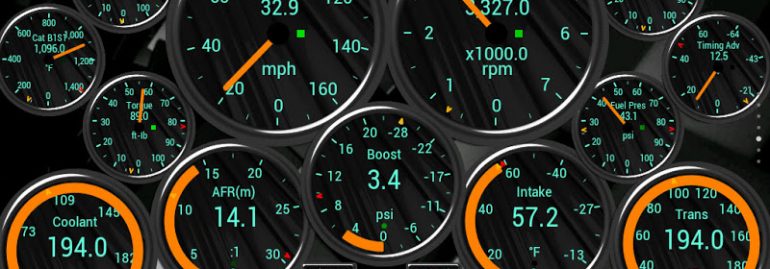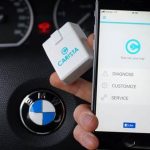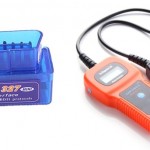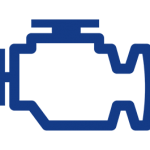On-Board Diagnostics (OBD) are the standards-based protocols that enable external devices to communicate with your car’s computer system. This system can be employed for various tasks, from emissions tests to diagnostics.
OBD2 provides human-readable data on such things as speed, RPM and throttle position that is much easier to work with than OEM specific raw CAN data that only a few software programs can decode.
VCDS
VCDS (also known as VAG-COM) is a diagnostic software program that replicates the features of dealership-style scan tools for Volkswagen, Audi and Seat vehicles. It can read fault codes, clear them out and perform other basic operations at a fraction of the cost of dealership tools.
Ross-Tech developed VCDS, a Windows program that allows anyone to quickly access their car’s onboard computer (ECU) and perform advanced diagnostics. It boasts several key features like its graphical user interface that lets users view and interact with all data logged in their vehicles.
The software can be utilized to read and clear error codes stored in the ECU, display error messages, and identify which controls are causing issues.
Another feature is the capacity to read data from various sensors and components of a vehicle, which is useful for troubleshooting emissions-related systems. It can also show you how well the car engine is running, its current temperature, and other essential information.
Additionally, it offers users the capability to alter settings on control modules and adjust various operating parameters – an especially helpful feature in recent model year vehicles.
This feature is especially beneficial when performing diagnostics on internal components, as it makes it much simpler to verify a particular part’s functionality without having to replace the part itself. Furthermore, this can help avoid unnecessary part replacements by detecting real failures beforehand.
The VCDS software has been upgraded to provide the capability of looking up and clearing various diagnostic codes, as well as taking live data readings from sensors on the vehicle’s ECU. Furthermore, it’s integrated with a mobile version of the program so users can use their Android, Blackberry or iPhone phones for diagnostics on their car.
VCDS is available in two versions: the free Lite version for non-commercial use and the PRO version which costs $199. However, the Lite version can only connect to three VINs while the Pro one supports up to ten.
OBDeleven
OBDEleven is a cloud-based application available on iPhone and Android that enables users to perform detailed diagnostics on their car from the convenience of their phone. With this user friendly software, you can fully access all your vehicle’s control systems, read fault codes, clear them outright, share them with others and activate various comfort functions – all from the convenience of your mobile phone!
This system can be an excellent way to ensure your car runs optimally, but the downside is it requires WiFi connectivity. Without access to WiFi, diagnosing and fixing problems may prove challenging.
Another drawback with this tool is that it only works on VW and Audi vehicles. Furthermore, using it can be expensive unless you purchase either the PRO version or ULTIMATE version of OBDEleven App.
Coding a new feature for your vehicle can be daunting if you aren’t technically-savvy and lack familiarity with the software. Making mistakes that cost you either your car or considerable amounts of money in the long run are likely to prove costly.
OBDEleven has developed apps that make simple changes to your car without risking serious damage or errors. With these, you can adjust things like rain-sensing wipers, climate control buttons, lights and function – plus much more!
One of the greatest features of this software is its easy coding function for users who lack experience and skillset to code their own car. These applications, known as “One-Click apps”, make coding your own car much simpler!
They can be activated with in-app credits and offer a range of functions, such as: * Retrofits which adapt additional vehicle parts (LED license plate lights, washer fluid level sensor etc.) after installation; or * Adjustments tailored towards specific driver needs like dimming the lights in the car, controlling comfort functions, unlocking cool new features or disabling unwanted ones.
OBDEleven also provides users with ready-made One-Click apps for daily use that let you reset service and inspection lights, adjust comfort levels according to your driving style, and more. However, these are subfeatures of OBDEleven which require credits even with the Pro subscription – even with it!
CANbus
CANbus is an interconnect protocol widely used in automotive applications like OBD II and factory automation. It enables control units on vehicles to communicate with one another without the help of a host computer.
Though CANbus has long been used in automotive applications, other communication technologies are rapidly replacing it as the more efficient method for sending data over long distances and faster. Popular examples include Ethernet TCP/IP and others; however, none can offer the same level of dependability or error recovery that CANbus provides.
One of the core features of CANbus is message prioritization, which guarantees each node the maximum bandwidth on the bus for transmission of its own data. This is achieved through bitwise arbitration, which requires all nodes on the CAN network to be synchronized so they can sample all bits simultaneously.
Each CAN node is assigned a unique CAN ID, either 11 bits (CAN 2.0 A) or 29 bits (CAN 2.0B), to identify them on the bus. This ID serves as identification for each node and plays an important role in message arbitration as it determines who has priority to receive frames sent by another node on the system.
When a node receives a CAN frame, it checks its CRC for accuracy and sends back an acknowledgment frame with a dominant bit set as an acknowledgment. Furthermore, this acknowledgement frame also contains an EOF (end of frame) bit to signal termination of communication.
Error frames occur when one node on the CAN bus sends out an invalid message and all nodes on the network must retransmit it until all have received it. Even though these frames violate bit stuffing rules, an elaborate system of error counters in the controller ensures no single node can monopolize all communication in case of repeated transmission.
In addition to error frames, CAN also provides remote frames, overload frames and an error delimiter field. These frames help nodes recover from errors that occurred during encoding or formatting a message. These frames follow the same logic as CAN messages but contain extra information for greater robustness.
Data Logging
Data logging is the process of gathering, recording and storing information. This can be done manually or automatically with advanced applications like AI, machine learning and robotic process automation (RPA).
Datalogging devices collect information from sensors and other input sources, then transfer the data to a microprocessor for processing. The microprocessor interprets and displays the data in various formats such as tables, graphs and charts.
Data logging is popular across a range of industries. They use these devices to monitor processes and equipment, such as processor temperature and CPU usage over time; evaluate network performance; measure temperature and humidity levels at various locations; as well as track supply chain and transportation activity.
Selecting the ideal data logger is essential for several reasons, including cost and accuracy. Many factors can impact its quality, such as its type of storage and how much memory it can store before becoming full.
Recording Duration – The length of time a data logger can record before overwriting its oldest readings depends on its memory capacity and sample rate. The more samples taken per minute, the longer it will remain active until its memory is full.
Reliability – Data loggers must be reliable in harsh conditions, so manufacturers go to great lengths to guarantee their devices won’t stop logging data even when faced with power outages or other problems. To guarantee this, manufacturers invest heavily in making sure their devices can function normally even during a power outage or other issue.
Alarms and Notifications – Many data loggers come equipped with the capability of sending alerts via email, text messages or phone calls if a condition exceeds its set threshold. This saves money by enabling action before it’s too late and helps avoid loss of assets or materials.
Data loggers in schools can assist students in learning about science experiments by contextualizing their results and allowing them to adapt or alter their experiment based on what they have discovered. This makes the experience more authentic, enabling students to engage like real scientists.






